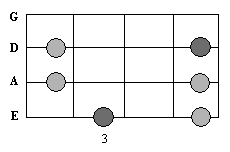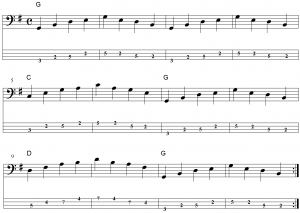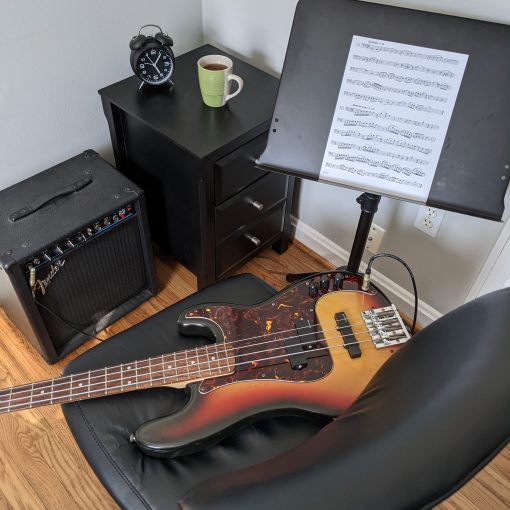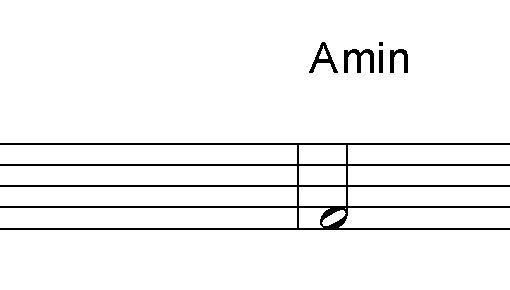Level: beginner
No part of this lesson may be copied, reproduced, or distributed in any form without consent of the author. Copyright © Doug Ross, all rights reserved.
I get a lot of beginning bass students who are eager to learn about music in general but, understandably, aren’t sure where to start or what styles they want to focus on. I usually suggest starting with the blues because it’s a fairly simple kind of music to get a handle on, and also because blues is truly the foundation of practically every modern style of popular music. If you’re going to play the bass, then sooner or later, you’re going to be asked to play the blues, so let’s get started with it!
The notes used in blues bass lines often come from the Major Pentatonic Scale. Sounds complicated? It’s actually just a simple box-shaped fingering pattern. Here’s how it looks on your bass fingerboard:

“Penta” means five and “tonic” means tones, so a pentatonic scale is simply any five-note scale. There are other pentatonic scales to be explored later, but in this case, we are dealing with a common version based on the Major scale (do-re-mi-fa-so-la-ti-do). Since the major scale has seven notes, we must omit two in order to make it pentatonic (fa and ti).
“Wait a minute!” you protest. “That leaves 6 notes in the scale, not 5.” But notice that the scale begins and ends with “do” (in this case G), so technically it only contains 5 note names. If all this note counting is confusing you, don’t worry. In order to play this blues line, you only need to visualize the box shape on the neck. We will be playing the same fingering pattern starting at 3 different places on the neck, to correspond with the changing chords of the song. Let’s play it first starting on G (3rd fret, E string).

This is called a walking bass line because it consists of four evenly paced quarter notes per bar. You should strive for steady timekeeping and a full, sustained sound as you play this line. Notice that we left out one of the notes (the second note) from our Major Pentatonic scale. That note is still fair game for playing the blues, it just doesn’t happen to get used in this particular bass line. Now try playing the same fingering pattern starting from the note C:

And again from the note D:

Maybe it’s already starting to sound familiar to you? There are literally thousands of songs that have been recorded using this bass line, or other close variations of it. Here is the complete 12-bar blues form for this song:

Once you can play the walking pattern smoothly starting on each chord, try playing through the whole song. You’ll need to count the bars 1-2-3-4, 1-2-3-4…etc. in order to know when to change chords. You can repeat the whole 12-bar form as many times as you like for jamming with your guitarist friends. Guitar players love to play the blues. Have fun with it!



